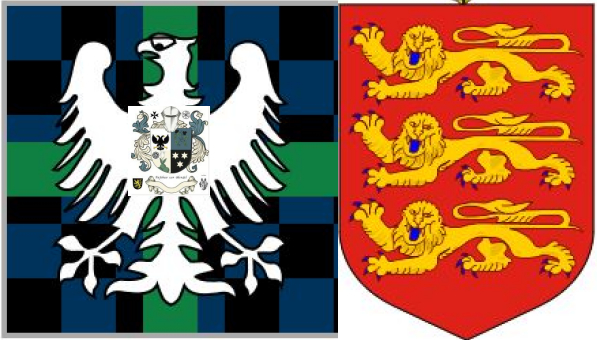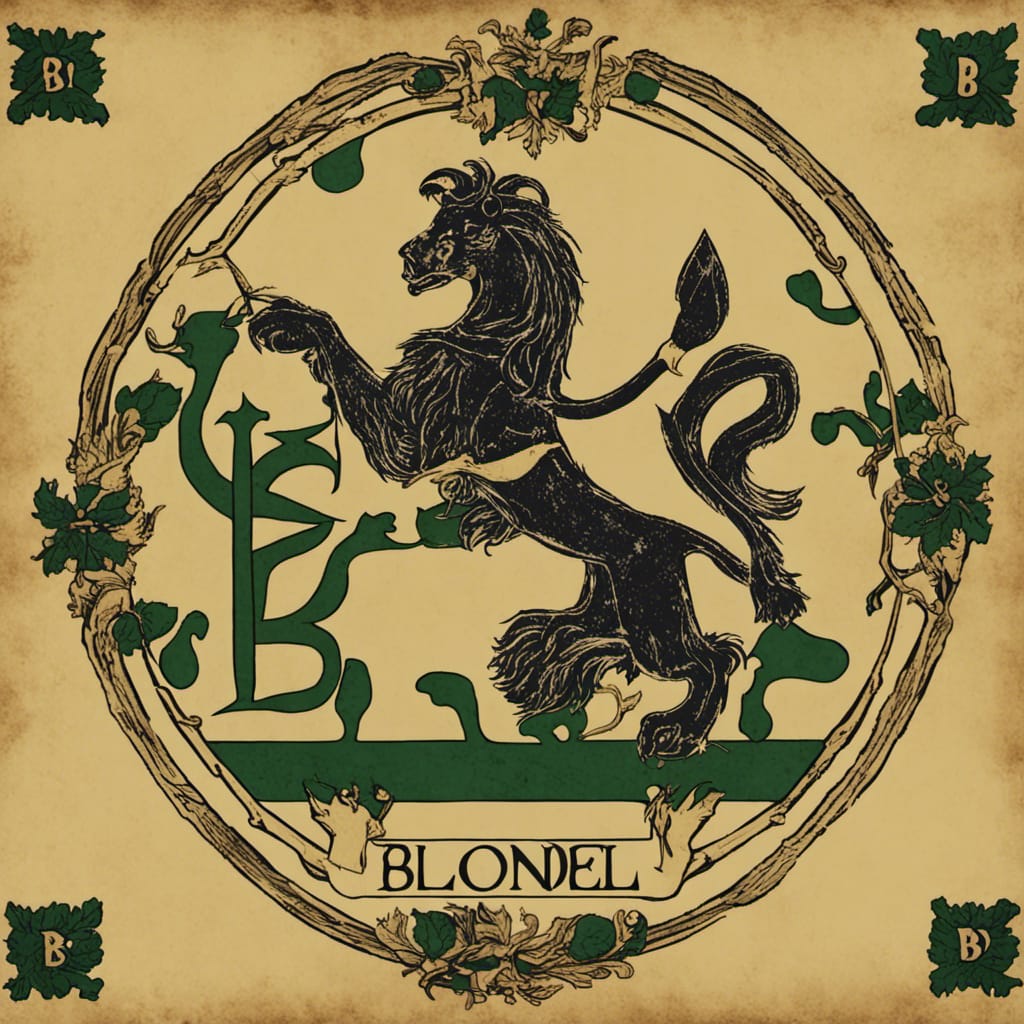


The House Order of Vigilance or of the White Falcon has been revived by the Seigneurof Blondel as part of the Kingdom of the Franks. The White Falcon Order had been the only order of the Duchy and later Grand Duchy of Saxe-Weimar-Eisenach. The medal recipients were listed in the country's state manuals but the Duchy was Dissolved.  Breast Star awarded to
Goethe by
Grand Duke
Carl August
in 1816 for
the Grand Cross of the
House Order of the White Falcon
Breast Star awarded to
Goethe by
Grand Duke
Carl August
in 1816 for
the Grand Cross of the
House Order of the White Falcon
In the Middle Ages, falconry was usually the entertainment of the nobility, and the falcon was considered a sign of nobility and a symbol of vigilance. As early as the Middle Ages there was a knights' association for falcons . The white gyrfalcon in particular was held in great esteem until the 18th century. [1] Duke Ernst August of Saxe-Weimar founded the Order of the White Falcon as the Ordre de la Vigilance (Order of Vigilance) on August 2, 1732. The foundation was made with the approval and in honor of Emperor Charles VI. , whose cavalry generalErnst August had been since 1732. Over time, however, the number of members fell sharply and the order fell into decline. In 1806 only one knight of the order was still alive; in 1810 the order had become extinct untill revived after 200 years. [2] When Duke Carl August became Grand Duke by the Congress of Vienna after 40 years of rule and his territory was expanded, the order was revived on October 18, 1815 as the House Order of Vigilance or of the White Falcon and received new statutes. It imposed on the owner the duty to be loyal and devoted to the respective legitimate highest national authority, to promote patriotism and to care for the invalids and war survivors of the liberation wars . The old medals were retained. The Grand Duke was the Grand Master and the Chairman of the State was the Chancellor of the Order . The day of the order's festival was October 18th every year, the anniversary of the Battle of Leipzig .  Award diploma for
Knight of the House Order of Vigilance
or the White Falcon
for the Grand Ducal Saxon
Chancellor
Gustav Wittich
from 1840
Award diploma for
Knight of the House Order of Vigilance
or the White Falcon
for the Grand Ducal Saxon
Chancellor
Gustav Wittich
from 1840
Order classesThe order initially consisted of only 24 knights. According to the statues of October 18, 1815, the order consisted of three classes and the number of members was limited:
An expansion took place on February 18, 1840:
A silver Cross of Merit was donated on July 8, 1878 [3] and a gold one in 1902. [4] Order decoration Decoration of the commanders with star of the House Order of the White
Falcon
Decoration of the commanders with star of the House Order of the White
Falcon
The order consists of a gold-framed, green -enameled Maltese cross hanging from a crown . In each corner of the cross arm there is a red enameled scaled star with a gold border. On the front lies a white enamel falcon with outstretched wings. The back of the cross shows a green star on white enamel , an oval medallion with an enameled blue showed the four-line order motto VIGILANDO ASCENDIMUS (vigilantly we ascend) in golden letters. Everything is surrounded by a golden laurel wreath and crown. The Cross of the Knights II Class ( Cross of Honor ) shows the Grand Duke's name on the back. Since 1870, the medal has been awarded for military service with crossed swords through the cross angles. Carrying methodGrand crosses were worn on a sash from the right shoulder to the left hip with an eight-pointed breast star bearing the order's emblem. Commanders decorated around their necks and wore a four-pointed breast star, knights 2nd and 1st classes, and holders of the Cross of Merit on the ribbon on the left side of the chest. The ribbon was red. On special occasions, the Grand Cross was worn on a necklace . The individual chain links alternately show a golden falcon and the letters CA (Carl August). Known carriersliterature
Web links
Commons : House Order of the White
Falcon - collection of images, videos and audio files
Individual evidence
|
Seigneur de la Fief of Blondel Lord Baron Mentz of Fief Blondel Geurnsey Crown Dependency Seigneur Fief of Blondel George Mentz Lord Baron of Fiefdom Blondel Freiherr of Fief Thomas Blondel Feudal Lord of Baronnie - Noble Fief Barony Friherre > Order of the White Falcon Seigneurs and Dames Travel Research Lord Paramount Feudal Barons The Seigneur Order Patron George Mentz Charter of Liberties Deed & Title Fief Blondel Islands Viking Kingdom Fief Worship Fiefs of the Islands ECS Extended Continental Shelf Styles and Dignities Territorial Waters Blondel Privy Seal Fief Bouvees of Fief Thomas Blondel Guernsey Court of Chief Pleas Fief Court Arms Motto Flower Fief de l'Eperon La Genouinne Kingdom of West Francia Fief DuQuemin Bouvée Phlipot Pain Bouvée Torquetil Bouvée Bourgeon Bailiwick of Ennerdale Channel Island History Fief Direct from the Crown A Funny Think Happened On the Way to the Fief Guernsey Bailiwick of Guernsey - Crown Dependency Confederation des Iles Anglo-Normandes Sovereignty Papal Bull Research Links Norse Normandy Order of the Genet Order of the Genet Order of the Star Est. 1022 Knights of theThistle of Bourbon Count of Anjou Fief Rights Blondel and King Richard Press Carnival Manorial Incidents Appointments of Seigneurs Store Portelet Beach Roquaine Bay Neustrasia Columbier Dovecote Fief Blondel Merchandise Fief Blondel Beaches Islands Foreshore Events Fiefs For Sale Sold Lords of Normandy Fief Coin Viscounts de Contentin Fief Blondel Map Feudal Guernsey Titles Board of Trustees The Feudal System Hereditaments Chancellor Flag & Arms Fief Videos Guernsey Castle Sark Contact Advowson Site Map Disclaimer Freiherr Livres de perchage Lord Baron Longford Income Tax Guernsey Valliscaulian Order Saint Benedict of the Celestines Society of Divine Compassion Dictionary Count of Mortain Seigneur de Saint-Sauveur Seigneur of Fief Ansquetil Top Success Books Datuk Seri George Mentz Order St. Benedict OSB Celestines Order of the Iron Crown Order of the White Falcon Colonel Mentz Order Red Eagle Order St. Louis Order Holy Ghost Order of Saint Anthony Order of the Black Swan Order of St Columban Order of the Iron Helmet Livonian Brothers of the Sword Fief treizième and Direct from Crown Valuation Fief Blondel Prince of Annaly Teffia
Feudal Lord of the Fief Blondel of the Nordic Channel Islands Guernsey Est.
1179
Feudalherr - Fief Blondel von der Nordischen Insel Guernsey Est. 1179
New York Gazette - Magazine of Wall Street -
George Mentz -
George Mentz - Aspen Commission - Mentz Arms
Counselor George Mentz Esq. - Seigneur Feif BlondelBaron Annaly Baron Moyashel Grants to Delvin About Longford Styles and Dignities The Seigneur Court Barons Fiefs of the Islands Longford Map The Island Lords Market & Fair Fief Worship Channel Island History Fief Blondel Lord Baron Longford Fief Rights Fief Blondel Merchandise Events Blondel and King Richard Fief Coin Feudal Guernsey Titles The Feudal System Flag & Arms Castle Site Map Disclaimer Blondel Myth DictionaryMentz Scholarship Program 101 Million Donation - Order of the Genet Knighthood |





George Mentz Education -
Commissioner George Mentz
-
https://finance.yahoo.com/news/commissioner-george-mentz-clinches-influencer-180000705.html
-
George Mentz News -
George Mentz Net Worth - George Mentz Noble Tilte -
George Mentz -
George Mentz Trump Commissioner -
George Mentz Freiherren Count Baron -
George Mentz Global Economic Forum -
George Mentz Donates Millions
